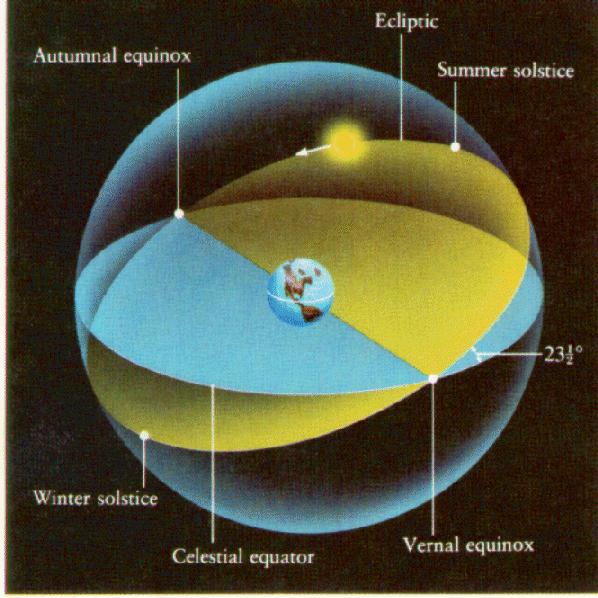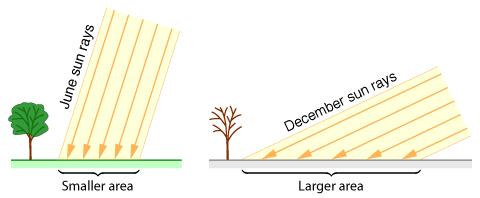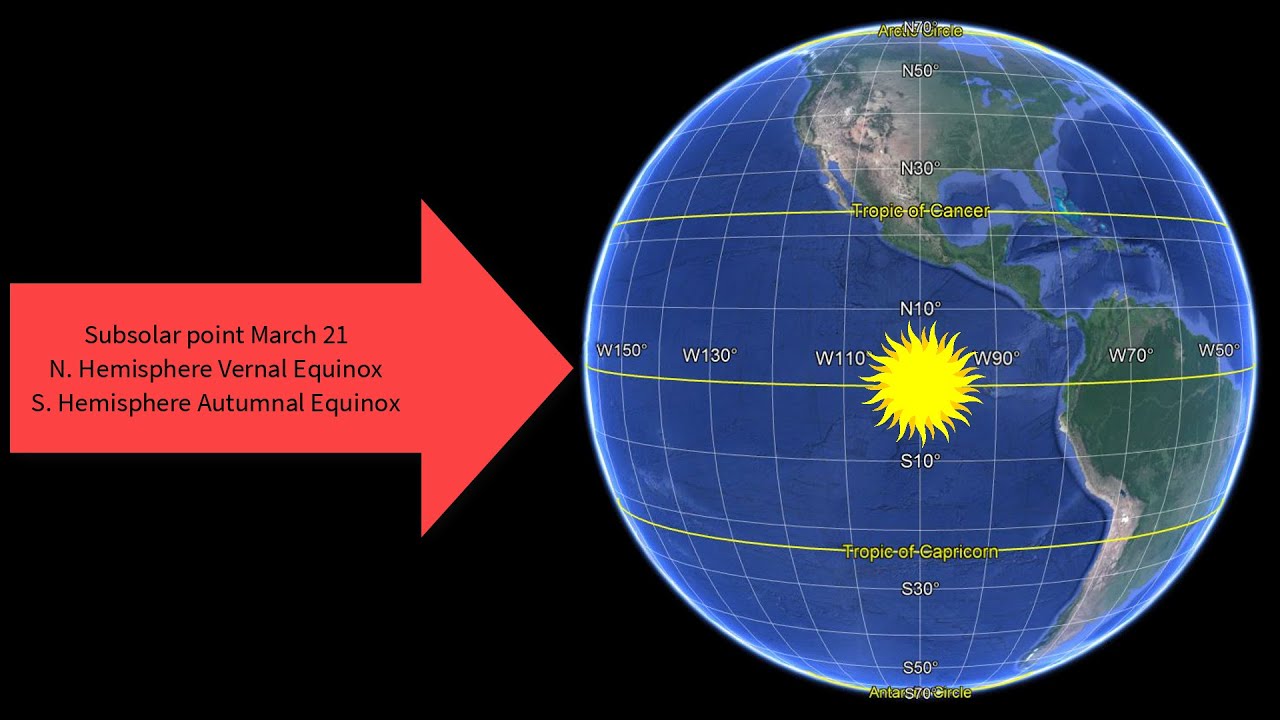
As a result of the orbital motion of the Earth, the Sun moves slowly through the stars on the Celestial Sphere from west-to-east. The path it traces out is referred to as the Ecliptic and the constellations through which it passes are referred to as the Zodiac Constellations.
The Sun takes one sidereal year (roughly 365.2564 days) to make one complete trip through the stars. Helpful video
To define positions of objects on the Celestial Sphere, we use Right Ascension and Declination. We already noted that the Right Ascension is measured east and west of the point on the Celestial Equator known as the Vernal Equinox. How is the Vernal Equinox defined?
The rotation axis of the Earth and the orbital axis of the Earth are not parallel. They are misaligned by an angle of 23.5o.

As a result, the Ecliptic and the Celestial Equator are inclined at angle 23.5o with respect to each other. Because of this, the orbit of the Earth sometimes places the Sun above the Celestial Equator and sometimes below the Celestial Equator. This motion gives us some natural checkpoints on the Celestial Sphere. We define the following points on the Celestial Sphere;

Vernal (Mar 20, 2022 UTC) and Autumnal (Sep 22, 2022 UTC) Equinoxes and Winter (Dec 21, 2022 UTC) and Summer (June 21, 2022 UTC) Solstices
The two equinoxes occur when the Sun passes through the Celestial Equator and the two solstices occur when the Sun is at its greatest distance north and south of the Celestial Equator.
The misalignment between the rotation axis and orbital axis of the Earth coupled with the orbital motion of the Earth leads to the changing of the seasons. Note that the seasons change with a period of 365.2422 days, the Tropical year, an interval slightly shorter than the sidereal year. The question we now address is

The most direct heating occurs at the Subsolar Point

The heating (angle, subsolar point) for a particular location, varies over the course of a year. This is the main effect.
|
|
On June 21 (or so), the Sun reaches its farthest point north of the Celestial Equator, the Summer Solstice. The Sun then moves toward the Celestial Equator, passing through the Celestial Equator on around September 22, the Autumnal Equinox. The Sun reaches its maximum distance south of the Celestial Equator on around December 21, the Winter Solstice, passing through the Celestial Equator, heading north, on around March 20, the Vernal Equinox.How do the diurnal circles for the Sun vary over a year in Eugene, OR (latitude ~ 44o N, longitude ~ 123o W). In Eugene, the altitude of the NCP above the north point on the horizon is ~ 44o. [ How far is the Celestial Equator above the south point on the horizon? Answer: ~ 46o.] So, what is the altitude of the Sun above the (South/North?) point on the horizon at roughly noon on the equinoxes and solstices?
So, in Eugene, the maximum altitude of the Sun above the horizon is:
|
Leap Years: Because the Tropical Year is 365.2422 d long which is around 1/4 of a day longer than the calendrical year, the calendar and the seasons would get out of sync if nothing was done to correct for this mismatch. To correct for this, Leap Years are inserted periodically (usually every fourth year). If we always added a day every fourth year, we would still run into trouble because 4 x 0.2422 d = 0.9688 d and an extra 0.0312 d would be added every 4 years. This would again cause the calendar to get out of sync with the seasons.
Consequently, further rules concerning leap years are formulated:
Unfortunately, this still isn't quite right and it was decreed that there would be no leap years for the years 4000, 8000, and so on.
